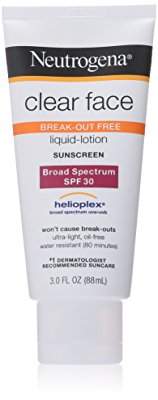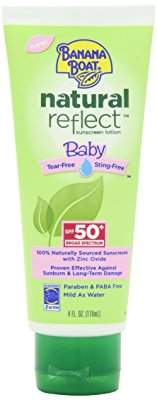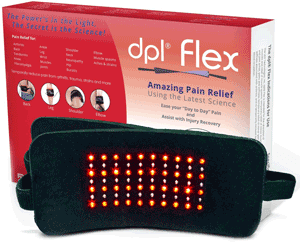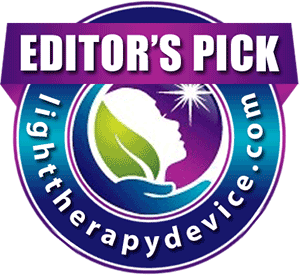A little sunshine goes a long way if you suffer from acne. Sunlight can actually help clear up an outbreak as long as you don’t overdo it. Acne.org recommends up to 20 minutes a day of sunlight exposure for people with light-colored skin, and up to half an hour for those with darker skin.
If you plan to spend more time than that outdoors, you need sunscreen. The ones that are the gentlest for acne-prone skin block harmful rays with zinc oxide or titanium dioxide. They may whiten your skin tone, but many of them last all day (as long as you’re not in the water). They also don’t clog pores.
A suncreen based on chemicals like aminobenoic acid (PABA) only lasts a couple of hours but goes on clear and may be more hydrating for your skin. But sometimes the chemical-based sunscreens end up causing more acne, so it’s important to research those well before buying. If you’re able to test it on a small patch of skin before you buy, that’s even better.
Table of Contents
- 1 What is SPF anyway?
- 2 But what about UVA rays?
- 3 The Best Sunscreens
- 3.1 Neutrogena Clear Face Sunblock Lotion, SPF 30
- 3.2 EltaMD UV Clear Broad Spectrum SPF 46
- 3.3 Shiseido Urban Environment Oil-free UV Protector SPF 42 Broad Spectrum for Face
- 3.4 Banana Boat Natural Reflect Baby Sunscreen Lotion SPF 50
- 3.5 L’Oreal Paris Advanced Suncare Sunscreen SPF 50 Plus Liquid Silk Sunshield For Face
What is SPF anyway?
“Sun Protection Factor” rates how well a sunscreen blocks harmful UVB rays. UVB (ultraviolet B) is what makes your skin burn and tan, and it causes some kinds of skin cancer. Sunscreen SPF against UVA isn’t rated.
SPF 15 means instead of getting sunburned in half an hour, you could be out in the sun for 7-1/2 hours. To see if the SPF rating is high enough for you, estimate how long it would take you to burn. (A half an hour is about average.) Then multiply that time in minutes by the SPF number. For example, 30 times 15 equals 450 minutes, or 7-1/2 hours.
Of course, dermatologists recommend a minimum of SPF 15, but you can buy up to SPF 100. Higher isn’t necessarily better. SPF 50 is the highest most people will ever need, and it blocks 98 percent of UVB rays.
But what about UVA rays?
Damage from UVA light isn’t visible like a sunburn, but it may be more serious. Ultraviolet A penetrates deeper into the skin. Its strength doesn’t vary with the time of day or season of the year like UVB does. UVA causes wrinkling, but it also damages the bottom layer of the skin where skin cancer forms.
Avobenzone is one of the handful of UVA-blocking chemicals that the FDA has approved for use in the USA. You may see it or its companion, oxybenzone, in the list of ingredients on a label. Zinc oxide also does a good job of blocking UVA, and it’s a physical blocker, not a chemical one.
The Best Sunscreens
It’s time to look at the best sunscreens that will protect your face and not make you break out. Many of these brands also sell sunblock creams for the rest of your body.
Neutrogena Clear Face Sunblock Lotion, SPF 30
A lot of American sunscreens offer little or no protection against UVA. (It’s because there are few chemicals available to manufacture them. The FDA hasn’t yet approved certain chemicals that appear in sunblock formulas sold in Europe and Canada.) Neutrogena tackled this problem with their Clear Face Sunblock. It has a strong SPF 30 rating and blocks both UVA and UVB rays.
How does it work? Neutrogena created “Helioplex,” a chemical combination of Avobenzone, Oxybenzone and DEHN. This is a chemical-based sunscreen, but it’s made to not clog pores or irritate acne.
There’s no fragrance and no oil. To soothe skin, Neutrogena included cinnamon, cedar wood, and Portulaca Flower. The sunscreen goes on light, and a little goes a long way. It doesn’t leave a white residue or sticky film. It lasts up to 80 minutes in water but needs to be renewed before then if you wipe off with a towel.
EltaMD UV Clear Broad Spectrum SPF 46
This sunscreen by EltaMD physically blocks both UVA and UVB rays with zinc oxide and octinoxate. It also contains niacinamide (aka Vitamin B3). Niacinamide helps skin have better tone and texture, which is why the UV Clear bottle says it’s great for “Skin types prone to Acne, Rosacea, and Hyperpigmentation”.
It has no oils, no fragrance, and no parabens. The untinted version comes out white from the bottle but applies clear on the skin. There is also a tinted version that helps hide skin discolorations. EltaMD recommends reapplying the sunscreen every two hours.
Shiseido Urban Environment Oil-free UV Protector SPF 42 Broad Spectrum for Face
The Urban Environment sunscreen from Shiseido contains a high percentage of zinc oxide, 12.5% to be precise. It also uses octinoxate and octocrylene to block UVB and UVA rays. It adds a little brightness or glow to skin, and it shrinks pores with Paeonia Albiflora root extract.
It goes on light and works well under makeup. It doesn’t irritate eyes. Of course, it’s oil-free. If you go swimming, it’s water-resistant up to 40 minutes.
Banana Boat Natural Reflect Baby Sunscreen Lotion SPF 50
Banana Boat is a big name in sunblock, so of course we had to include one of their sunscreens here. We opted for the Baby Natural Reflect because it’s based on titanium dioxide and zinc oxide so it blocks UVA and UVB naturally. It doesn’t depend on chemical blockers like PABA and oxybenzone. It also does not contain parabens or oils.
Like it says on the bottle, it’s tear-free so you won’t sting your eyes by accident. It’s water-resistant up to 80 minutes but needs to be reapplied sooner if you towel-dry.
L’Oreal Paris Advanced Suncare Sunscreen SPF 50 Plus Liquid Silk Sunshield For Face
Our final selection depends on Avobenzone and Oxybenzone along with other chemicals to block rays. It doesn’t clog pores and it sinks well into skin. Most satisfied user reviews comment that it really feels like liquid silk on the face.
It contains Vitamin E and white grape seed, which is an antioxidant. It has a light sunscreen-y scent.
If you’re planning on swimming, it will need to be reapplied after 80 minutes or sooner after you dry off with a towel.







